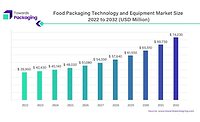Market Research
Yeast Extract Market Revenue to Exceed $2.8 Billion by 2032

According to Global Market Insights, Inc., the worldwide yeast extract market was valued at $1.6 billion in 2022 and will surpass a revenue collection of $2.8 billion by 2032 with an annual growth rate of 5.5% over 2023 to 2032.
The market growth is credited to the demand for clean and natural branded products among consumers across the globe.
Growing consumer awareness of the possible risks of artificial food additives and food safety problems is a factor driving consumer interest toward organic and clean-label products. People are opting for natural and nutritionally dense foods over artificial substitutes given the rising health consciousness, according to GMI. Moreover, technological innovations owing to the investments in R&D projects by the leading industry players are also expected to fuel yeast extract market growth.
The yeast extract market has been divided in terms of technology, source, application, form and region.
Based on source, the torula yeast segment is expected to hold $120 million market share by 2032. The research organization says that Torula yeast works well as a replacement for monosodium glutamate (MSG) and enhances the flavor and texture of food, making it more appetizing. This yeast has proven helpful in the production of supplements for puppies since it has high quantities of minerals including zinc, amino acids and vitamin B. Such attributes are set to increase the supply of these products, which will in turn foster the segmental growth, states the report.
In terms of form, the paste segment would amass lucrative returns through the forthcoming years. Yeast extract is utilized in paste form to prevent animal infections and encourage the development of young and growing animal species. The incorporation of yeast extracts in creams and lotions to increase moisture retention as well as maintain general hydration is anticipated to support their use in the cosmetics industry.
From the regional front, the Middle East & Africa yeast extract market is estimated to grow at more than 5.5% CAGR from 2023 to 2032. The regional market is likely to be driven by the increasing government initiatives and ongoing obesity-related health problems, which would fuel the demand for nutrient-dense foods.
Looking for a reprint of this article?
From high-res PDFs to custom plaques, order your copy today!






